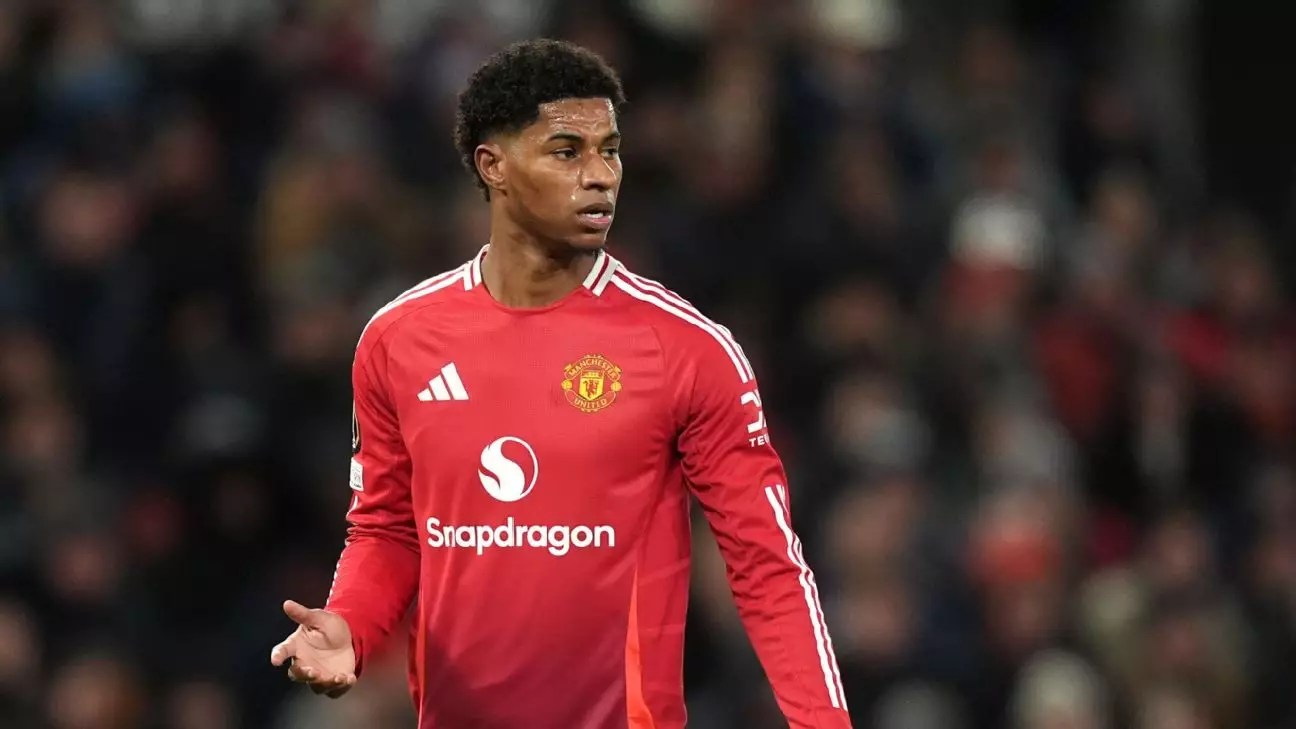In the world of football, change is often viewed as both a necessary evolution and a potential pitfall. One such story is that of Marcus Rashford, whose career narrative has taken a dramatic turn this season. After being out of favor under Manchester United’s former coach Erik ten Hag, Rashford has found renewed vigor during his loan at Aston Villa. The shift in environment seems to have rekindled the fire that once made him a sensation, proving that sometimes a fresh start can bring about the best in a player.
Under new management at Villa Park, Rashford has not only returned to form but is also showing statistics that highlight his impact. With two assists already, and leading the league in big chances created, he exemplifies the adage, “change is good.” However, Manchester United’s current management, under Ruben Amorim, appears to have drawn a definitive line under Rashford’s future at Old Trafford. They are looking to facilitate a permanent transfer to Aston Villa for approximately £60 million. This leads to the question: has Rashford finally found the right environment to flourish, or is he simply a product of good fortune amidst chaos at a struggling club?
The Pursuit of Rayan Cherki: The New Hot Commodity
As Rashford’s future hangs in the balance, the attention of Europe’s elite clubs turns to Lyon forward Rayan Cherki. With both Liverpool and Bayern Munich looking to acquire the young talent, it’s evident that Cherki is becoming hot property in the footballing world. Lyon’s decision to part ways with the 21-year-old this summer opens the floodgates for a frenzy of competition, echoing the reality of the modern transfer market where youth and potential are the crown jewels.
Cherki was initially on Borussia Dortmund’s radar, but the deal stumbled at the last hurdle—something that’s becoming a theme in the transfer saga of young stars. With a new agreement in place with Lyon, signaling his inevitable departure, one has to wonder if clubs like Liverpool and Bayern will secure the services of a player who could shape the future of their attacking frontlines. His anticipated availability could lead to a bidding war, presenting clubs with the chance to invest in a player who could provide dazzling returns in years to come.
Newcastle’s Forward Challenges and the Market Demand
Meanwhile, over at Newcastle United, the club’s ambitions hinge upon securing effective reinforcements. The Magpies are eyeing Bayer Leverkusen’s striker Victor Boniface, who has put up impressive numbers this season. Reports suggest that Newcastle will need to splash at least £40 million to secure the Nigerian international. This move reflects Newcastle’s broader strategy as they continue to reshape their squad to challenge for higher honors.
What stands out here is not just Newcastle’s interest but the growing trend across Europe’s football landscape resulting from a domino effect of team restructures and rising prices for talent. With clubs monitoring each other’s moves as much as they are their own, the transfer market is becoming a spectacle—a battleground where only the most strategic will emerge victorious. The question that begs to be asked is: with so many clubs vying for talents like Boniface, how will Newcastle manage this competitive landscape?
Liverpool and Barcelona’s Strategic Silence
In the midst of these discussions is Luis Díaz, who remains in limbo while awaiting an overture from Barcelona. The Colombian winger appears to be caught between Liverpool’s apparent squad overhaul and Barcelona’s financial recalibration. His situation raises interesting questions regarding player agency in the transfer market. In previous seasons, the influx of talent was instantaneous, based on team forms and business priorities, but now players seem to have more leverage in determining their futures, awaiting clarity from clubs before making career-defining moves.
While Liverpool continues its pursuit of a new direction, they are carefully evaluating their assets. The intricacies of player contracts and market variables compel the club to be cautious—especially concerning Díaz, who still has two fruitful years left at Anfield. This presents an intriguing look at the growing importance of a well-calibrated transfer strategy, showing us that patience and timing may be just as critical as bold moves in the summer window.
The Trickling Effects on Goalkeepers and Defensive Choices
The transfer landscape extends beyond forwards, with attention shifting towards goalkeepers like André Onana and Ederson, both of whom could see themselves lured away by substantial offers from Saudi Arabian clubs. The potential exits amplify the intricacies of the market, with both Manchester City and United eyeing replacements. The likes of Senne Lammens and Lucas Chevalier are already on their radar—this brings forth a reminder of how quickly dynamics can shift in football.
As clubs assess their options, the urgency to act competently is paramount. Managers and executives must balance ambition with fiscal responsibility, leading to tough decisions that can impact a club’s fortunes for years to come. The task at hand goes beyond mere acquisitions; it’s about strategically assembling a unit that not only competes today but fortifies for tomorrow.


Leave a Reply